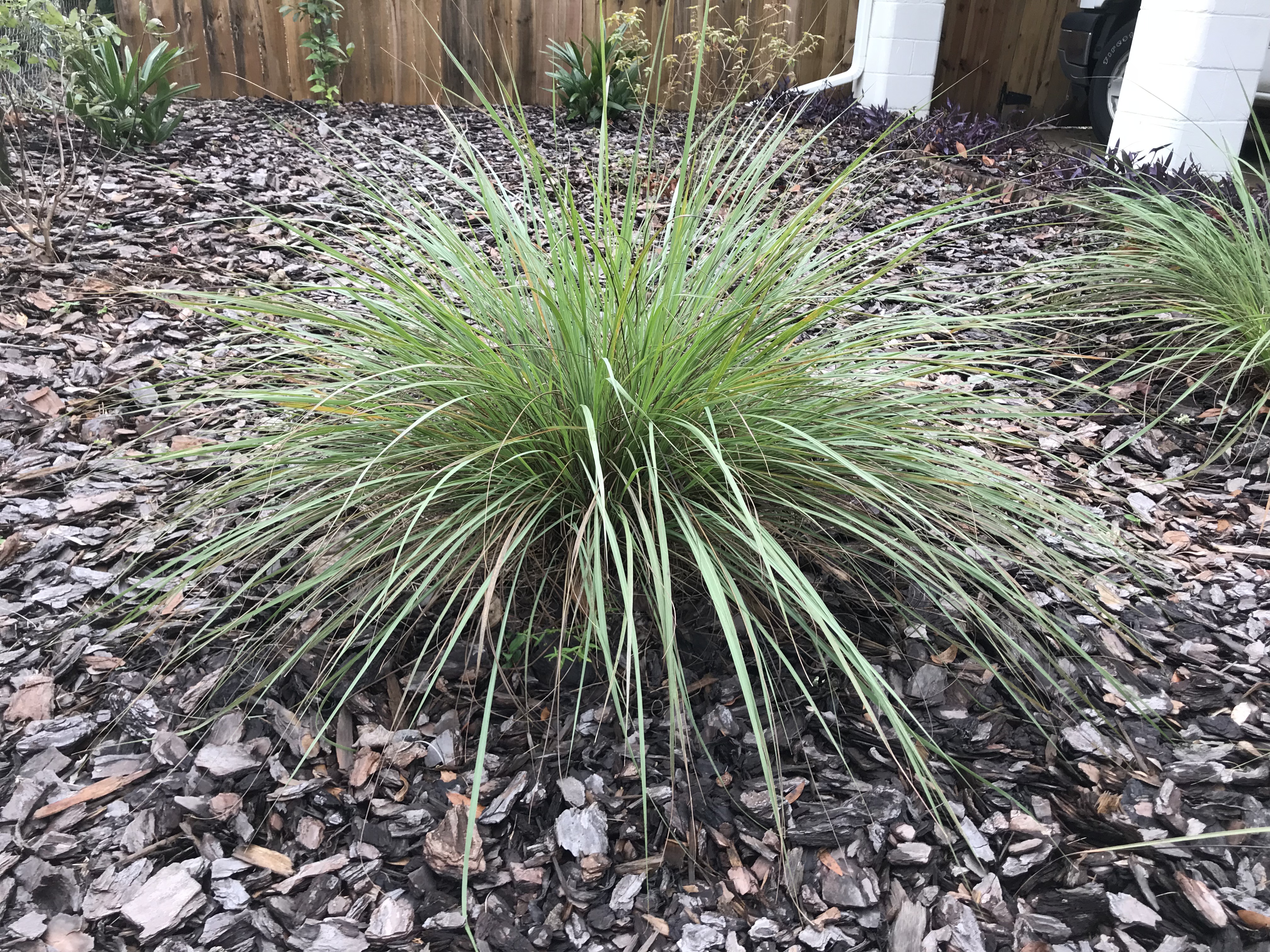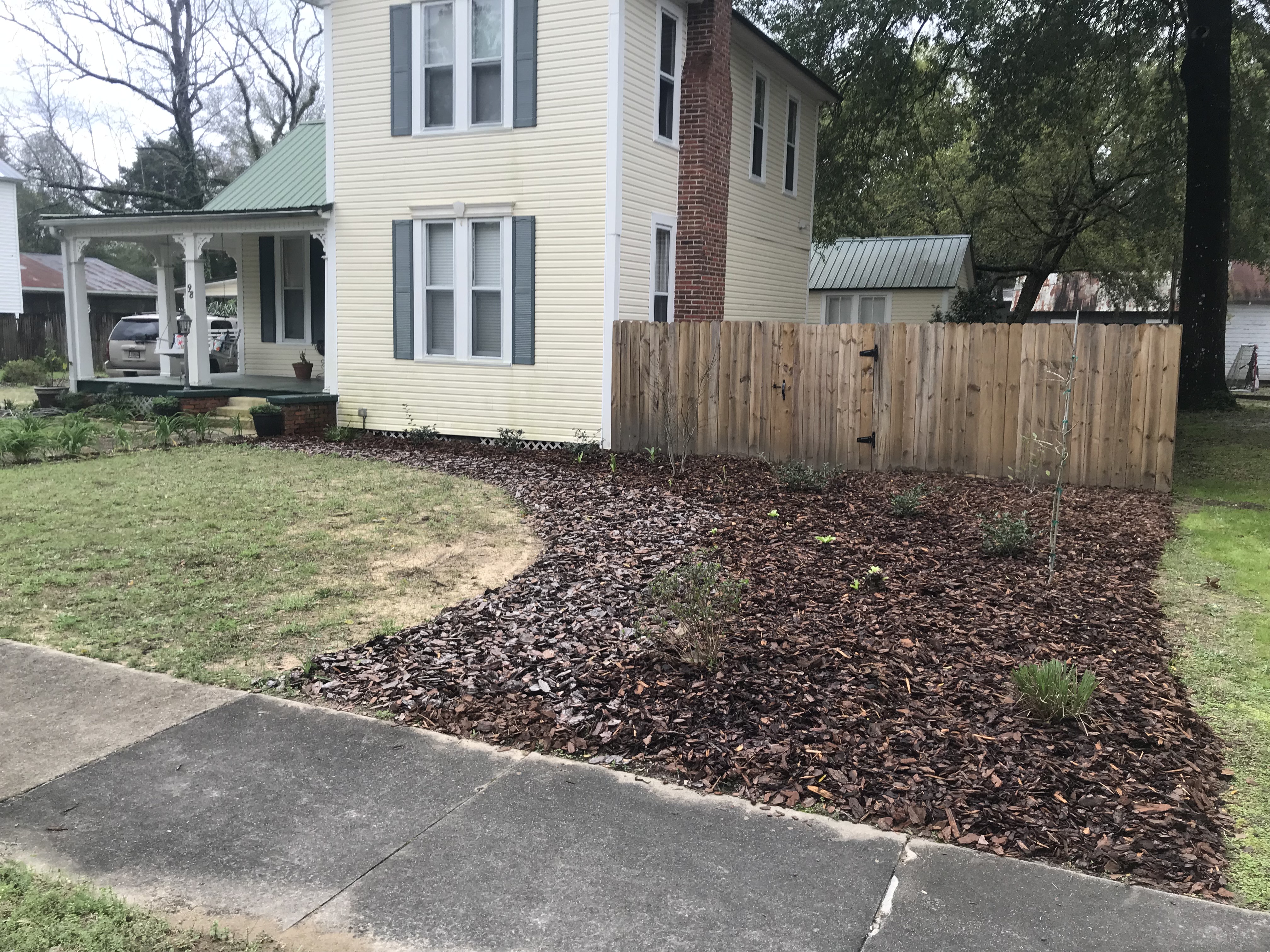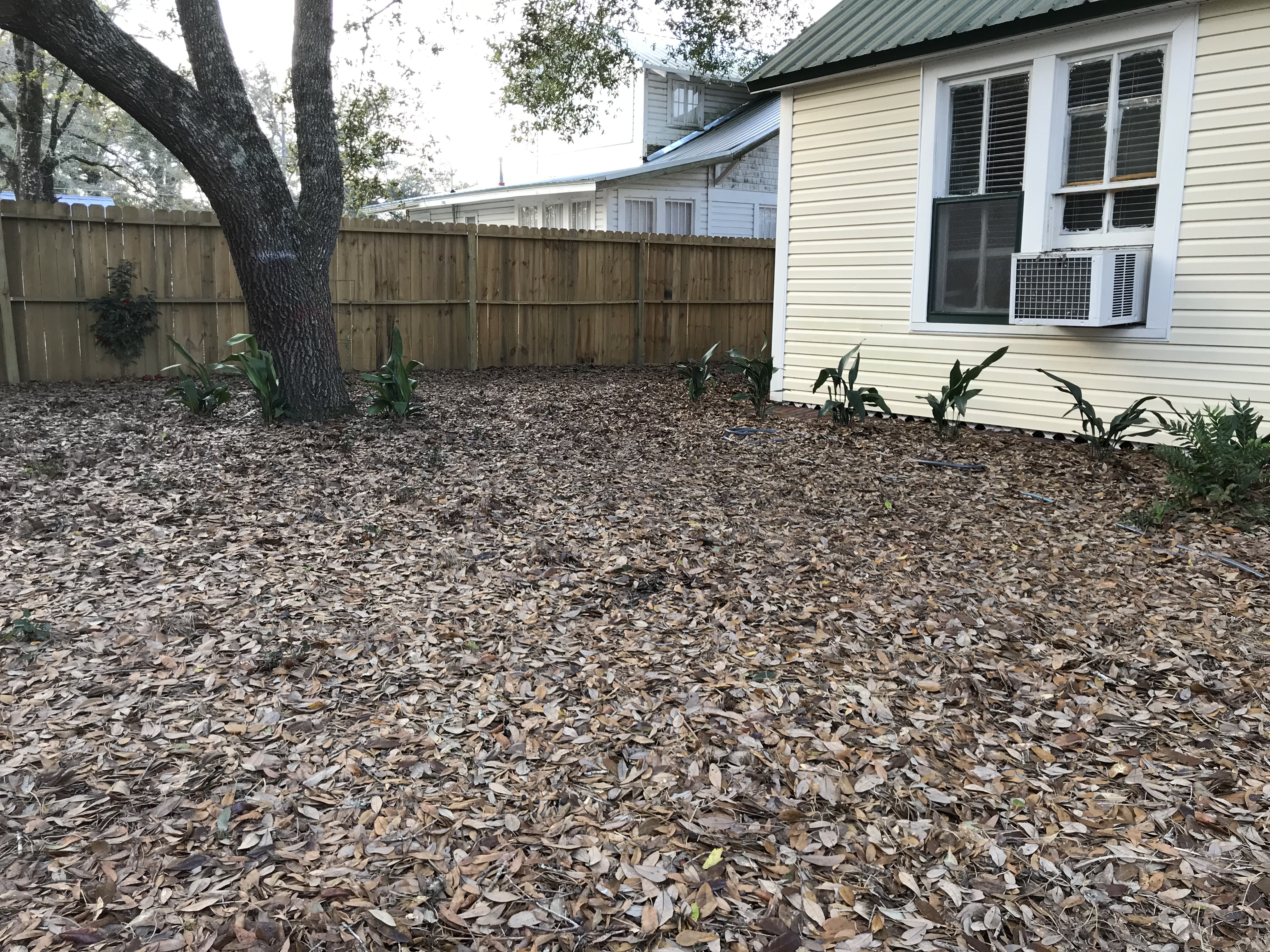Mulch provides nutrients to soil and plants, reduces weed growth, controls soil temperature, and improves the look of lawns and gardens. It gives the landscape a neat, uniform appearance and is an excellent Florida-Friendly choice for hard-to-mow areas and shady spots. One should keep a 2- to 3-inch-deep layer of mulch on plant beds. Always leave at least 2 inches of space around tree trunks to prevent rot. Create self-mulching areas under your trees by allowing fallen leaves to stay in place. Though bark and wood chips are typically the most common mulch, other forms are just as beneficial. The following are the best overall mulches for Panhandle gardeners!
Bark and Wood Chips
Bark and wood chips are frequently used on flower beds and around small bushes and shrubs. As they decay, the material provides nutrients to the soil. Both materials are inexpensive and can be found at most gardening supply stores. Cedarwood chips are popular for their repellent properties, keeping fleas and other pests away.
Pebbles and Rocks
Pebbles and rocks are effective in retaining soil moisture and minimizing weed growth. They are excellent mulch alternatives for flower beds. Rocks are economical in cooler climates, where heat retained by rock mulch can extend the growing season. Since rocks do not decompose, they don’t provide nutrients to the soil. If you’re looking for a nutrient-rich mulch alternative, rocks are not a good choice. This can be easily remedied by fertilizing your landscape to provide more nutrients. If you decide to use pebbles or rocks, keep in mind that they can be difficult to remove if you switch to a different type of mulch a season or two.
Leaves and Pine Needles
Leaves and pine needles are an affordable nutrient-rich mulch alternative. Rake and gather fallen leaves each season and redistribute them above your soil. For the best results, one should shred the leaves. Let the shredded leaves dry before adding them to your garden to reduce bacteria growth and pest infestations. Pine needles decompose and add nutrients to the soil, just like other organic forms of mulch. They work best with plants that prefer acidic soil conditions, like holly gardenias, roses, and chrysanthemums. You can buy bundles of pine needles at your local gardening store or gather them from your own trees and spread them around your garden.




Grass Clippings
Grass clippings are a cost-efficient alternative to traditional mulch. However, they must be dried out or composted before use to prevent potentially damaging heat from affecting plants. If you treat your lawn with chemicals, don’t use grass clippings in your flower or garden bed.
Compost
Compost is an affordable mulch alternative and enriches the soil by adding essential nutrients. Apply compost above your garden or lawn in a thin layer. Compost improves the soil, adding nutrients such as phosphorus, potassium, and nitrogen to your garden. One can make it yourself with discarded vegetable scraps, coffee grounds, dead leaves, and water.
Newspaper
Newspapers effectively keep weeds at bay, retain moisture, and regulate soil temperatures. Newspaper is equally functional compared to traditional mulches, but is not as visually appealing as other options. Moisten the newspaper slightly before laying it above the soil so that it stays in place. Then, add a thin layer of organic mulch on top. Apply five to eight sheets of newspaper at a time. If using newspaper without another mulch on top, shred it before applying it to your garden. Newspaper is biodegradable and will deteriorate like other mulches.
- Zinnias 101 - April 11, 2024
- Jefferson County Pollinator Teaching and Demo Garden - February 29, 2024
- Native Fruit Trees – The Common Persimmon - November 2, 2023
